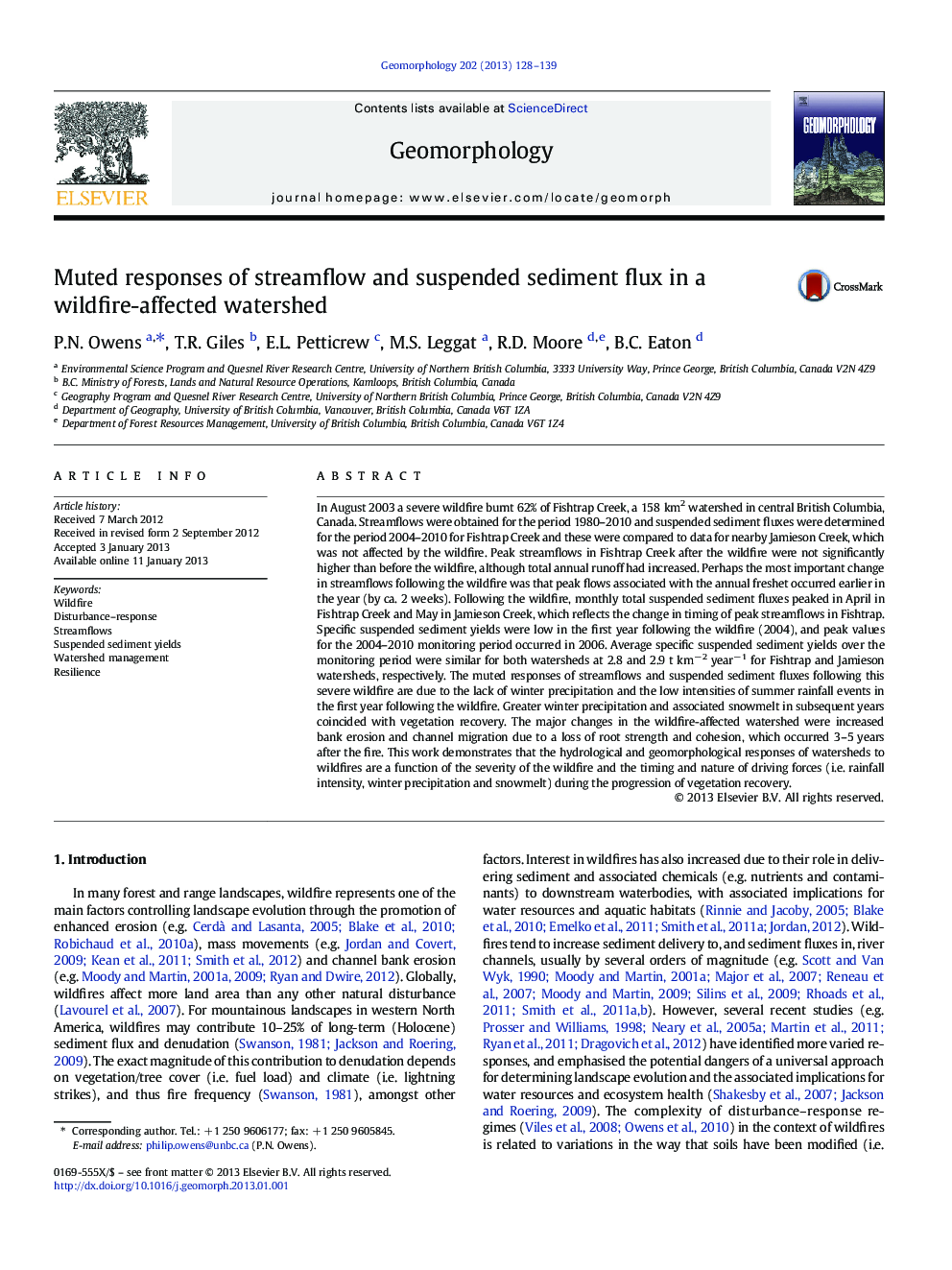| کد مقاله | کد نشریه | سال انتشار | مقاله انگلیسی | نسخه تمام متن |
|---|---|---|---|---|
| 4684634 | 1635447 | 2013 | 12 صفحه PDF | دانلود رایگان |
In August 2003 a severe wildfire burnt 62% of Fishtrap Creek, a 158 km2 watershed in central British Columbia, Canada. Streamflows were obtained for the period 1980–2010 and suspended sediment fluxes were determined for the period 2004–2010 for Fishtrap Creek and these were compared to data for nearby Jamieson Creek, which was not affected by the wildfire. Peak streamflows in Fishtrap Creek after the wildfire were not significantly higher than before the wildfire, although total annual runoff had increased. Perhaps the most important change in streamflows following the wildfire was that peak flows associated with the annual freshet occurred earlier in the year (by ca. 2 weeks). Following the wildfire, monthly total suspended sediment fluxes peaked in April in Fishtrap Creek and May in Jamieson Creek, which reflects the change in timing of peak streamflows in Fishtrap. Specific suspended sediment yields were low in the first year following the wildfire (2004), and peak values for the 2004–2010 monitoring period occurred in 2006. Average specific suspended sediment yields over the monitoring period were similar for both watersheds at 2.8 and 2.9 t km− 2 year− 1 for Fishtrap and Jamieson watersheds, respectively. The muted responses of streamflows and suspended sediment fluxes following this severe wildfire are due to the lack of winter precipitation and the low intensities of summer rainfall events in the first year following the wildfire. Greater winter precipitation and associated snowmelt in subsequent years coincided with vegetation recovery. The major changes in the wildfire-affected watershed were increased bank erosion and channel migration due to a loss of root strength and cohesion, which occurred 3–5 years after the fire. This work demonstrates that the hydrological and geomorphological responses of watersheds to wildfires are a function of the severity of the wildfire and the timing and nature of driving forces (i.e. rainfall intensity, winter precipitation and snowmelt) during the progression of vegetation recovery.
Journal: Geomorphology - Volume 202, 15 November 2013, Pages 128–139
